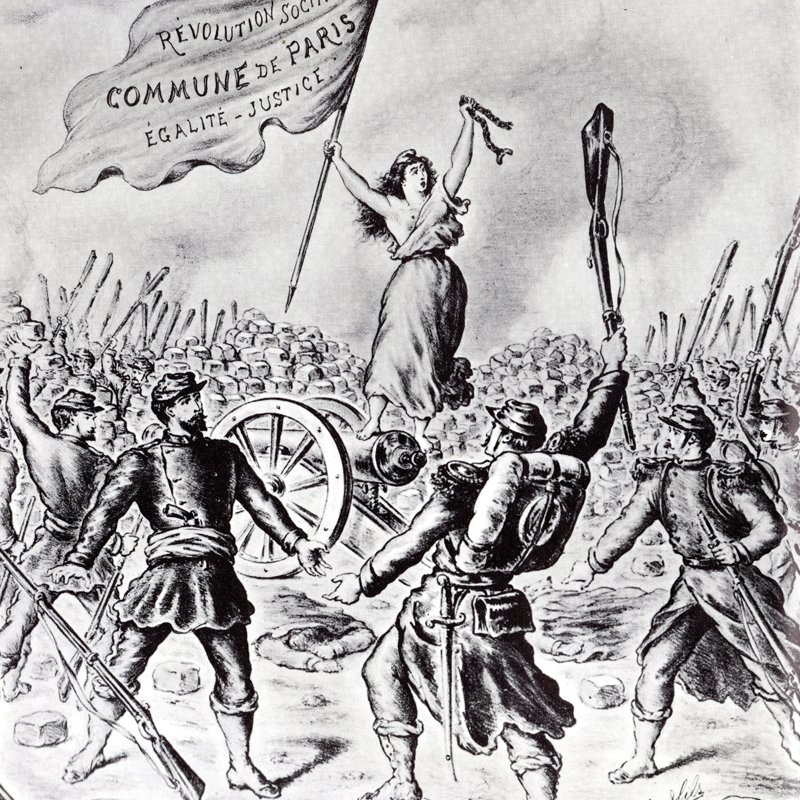
This Day in Labor History: March 24, 1934. FDR signed the Tydings-McDuffie Act granting gradual Filipino independence. Might sound like an anti-colonial victory but it happened because California whites freaked out that Filipino workers were having sex with white women!!! 

A look at the history of law demonstrates that it actually came out of the deep anti-Asian racism of the West Coast who saw Asian populations both as competition for white labor and competition for white women.
From the beginning of Anglo-American occupation in California, white workers defined the state as a white man’s republic. This was basically repeated in Oregon and Washington.
Yet from the very beginning, the polyglot population of the region challenged those assumptions. The arrival of Mexicans and Chinese along with whites into California freaked out the white population, which quickly sought to take over the diggings.
The Chinese were pushed into menial labor, as well as the most difficult and dangerous labor, such as railroad building.
White workers saw these workers as a direct threat, committed murderous violence against them, and lobbied for the passage of the Chinese Exclusion Act, the first major legislative victory for unions in American history.
California employers continued their search for cheap labor, turning to the Japanese. But the same anti-Asian sentiment rose up against the Japanese, especially as these workers began organizing as well, and the Gentlemen’s Agreement cut that labor off in 1907.
However, western employers now had a new source of labor: Filipinos. This was much more difficult for anti-Asian zealots to organize against, for Filipinos had the right to immigrate as colonial subjects of the United States since the 1898-1902 war of subjugation.
By the 1920s, Filipino immigration to California expanded rapidly, with over 24,000 coming between 1925 and 1929, mostly young men to work in the fields.
In response, the San Francisco Chronicle editorialized, “There is a serious immigration problem involved in the introduction of large numbers of person who are unassimilable yet who are given a statue little short of full citizenship.”
They lived in the same terrible camps that other workers suffered through in the fields, with housing that was basically chicken coops. The growers liked them because they worked hard and made little trouble on the farms. But the arrival of non-whites infuriated many Californians
To make it worse for white Californians, many Filipino men, and men made up 94% of the migrants, ended up having sexual relationships with white women. This was not what their cheap, exploitable labor was supposed to do.
Said Fred Hart, a farmer from Salinas, “The Filipinos will not leave our white girls alone…Frequently they intermarry.” That these new workers had status as Americans made their brazenness even more outrageous for white California.
So whites did what whites do so frequently in American history–they turned to violence against the people who color who dared stand up for human rights and labor rights.
On January 21, 1930, about two hundred white Californians tried to raid a Filipino-owned club near Monterey where nine white women worked as entertainers.
The mob expanded to about 500 people and the next night they started attacking Filipinos they found on the streets and in the orchards.
On January 23, the mob killed a farmworker named Fermin Tobera, who had come to California in 1928 to work in the fields and send money back to his impoverished family.
The bunkhouse in which he slept on the Murphy Ranch near Watsonville was set upon by whites who started firing into it. Tobera was shot in the head. This outraged the Filipino community working for the rights of their people in Washington, as well as Filipinos in Manila.
Other violent incidents popped up around California over the next couple of days, leading to beating and a stabbing. On January 29, someone blew up the Stockton headquarters of the Filipino Federation of America. Although several people were sleeping inside, no one was killed.
Given the trans-Pacific anger this violence caused, California law enforcement had to do something. Eight men pleaded guilty for incitement to riot; four of them served thirty days in prison and the rest of the sentences for all of them were suspended.
This violence is the context in which the U.S. considered granting the Filipinos their independence. Both supporters and opponents of Filipino migration to the U.S. thought independence was probably the best solution by the early 1930s.
The Watsonville Evening Pajaronian editorialized that it hoped the Philippines would get their independence so Japan would invade them and turn them into a new Korea.
Given the rapidly growing availability of white labor as the Great Depression deepened, the California growers wouldn’t struggle to find a new labor force either.
The law itself granted the Philippines independence after ten years. In exchange, Filipinos would have to abide by the racist immigration quota system of the 1924 Immigration Act immediately.
A whopping 50 immigrants from the Philippines a year were allowed into the United States. They were also denied citizenship rights.
1946 law, the same year that the Philippines actually received independence, doubled the quota to a whole 100 immigrants and restored the ability of Filipinos to become citizens.
A year after Tydings-McDuffie, Congress passed the Filipino Repatriation Act that provided free transportation for Filipinos who wanted to return to the islands but could not afford to do so.
The nation didn’t quite get to the point of rounding up these workers, but they came awfully close.
In conclusion, the United States was actually too racist and too concerned about interracial sex to remain a colonial power.
I borrowed from Dorothy B. Fujita-Rony, “Empire and the Moving Body: Fermin Tobera, Military California, and Rural Space,” in Bender and Lipman, Making the Empire Work: Labor and United States Imperialism in the writing of this thread.
Back tomorrow to commemorate the Triangle Fire
• • •
Missing some Tweet in this thread? You can try to
force a refresh








